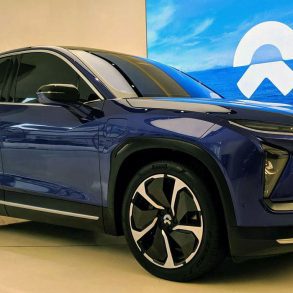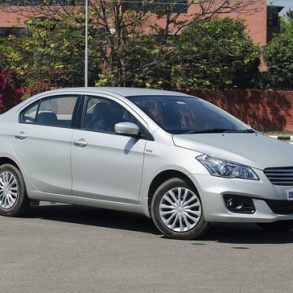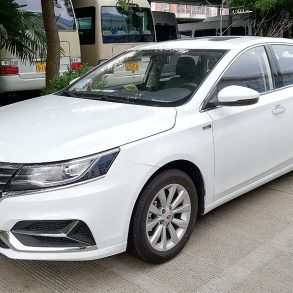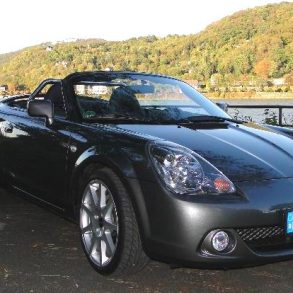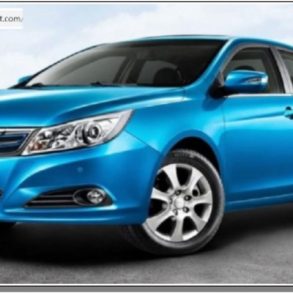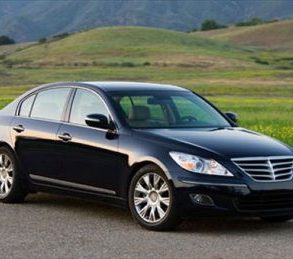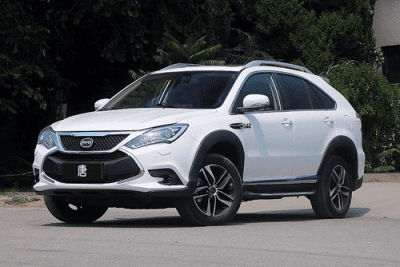 After discussing the China car sales figures for 2016, we’ll take a more detailed look into sales of EVs and PHEVs in the People’s Republic, which is by far the biggest market for Plug-in passenger cars in the world with a share of 44% of the world’s sales of this type of vehicle. That’s up from just 6% in 2013, helped by generous and sometimes fraud-prone subsidies. Will this quick rise continue? The Beijing central government has set a goal of 3 million EV sales in China by 2025, up from the almost 325.000 in 2016, so it’s definitely aiming for it. They will switch from the carrot strategy (subsidies) to the stick strategy (a carbon-credit scheme and a Corporate Average Fuel Economy standard), effective within the next few years, which mean foreign automakers will be forced to enter this market too. At the moment, most of China’s EV sales come from the local brands: Chinese automakers have produced 43% of all Plug-in cars built in 2016 worldwide. However, in the short term there is some uncertainty in the market as the central government’s subsidies will decline in 2017 to prepare for the new strategy. But moreover, the government has set standards for EV energy consumption and range, which could lead to a shakeout of mainly manufacturers of small and cheap EV citycars, many of whom are likely to fail to meet these tougher guidelines.
After discussing the China car sales figures for 2016, we’ll take a more detailed look into sales of EVs and PHEVs in the People’s Republic, which is by far the biggest market for Plug-in passenger cars in the world with a share of 44% of the world’s sales of this type of vehicle. That’s up from just 6% in 2013, helped by generous and sometimes fraud-prone subsidies. Will this quick rise continue? The Beijing central government has set a goal of 3 million EV sales in China by 2025, up from the almost 325.000 in 2016, so it’s definitely aiming for it. They will switch from the carrot strategy (subsidies) to the stick strategy (a carbon-credit scheme and a Corporate Average Fuel Economy standard), effective within the next few years, which mean foreign automakers will be forced to enter this market too. At the moment, most of China’s EV sales come from the local brands: Chinese automakers have produced 43% of all Plug-in cars built in 2016 worldwide. However, in the short term there is some uncertainty in the market as the central government’s subsidies will decline in 2017 to prepare for the new strategy. But moreover, the government has set standards for EV energy consumption and range, which could lead to a shakeout of mainly manufacturers of small and cheap EV citycars, many of whom are likely to fail to meet these tougher guidelines.
In 2016, combined sales of EV and PHEV passenger cars in China increased 62% to 336.000 units, of which battery-electric passenger car sales increased 75% to 256.000 units, and sales of plug-in hybrid passenger cars increased 31% to 80.000 units. Sales of battery-electric commercial vehicles increased 51% to 152.000 cars, and sales of plug-in hybrid commercial vehicles increased 19% to 19.000. The total market for Plug-in passenger cars and commercial vehicles in China increased 56% to 507.000 units in 2016.
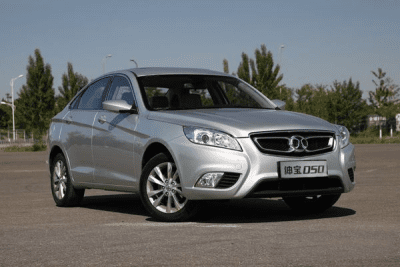 BYD has taken a controlling hold on the Chinese market for Plug-in passenger cars, leading both the EV and the PHEV segments and dominating the top-3 when combining the segments. The BYD E6 is has almost tripled its volume to sell over 20.000 units, and it’s followed by two BAIC models, both over 18.000 sales: the Beijing Senova D50 EV arrives at #2 (it was launched December 2015) and the E-Series EV (the Mercedes B-Class 1st generation look-a-like). The Geely Emgrand EV is the second highest new arrival in fourth place. Sales of the Zotye Z100EV (a clone of the Maruti-Suzuki A-Star / 7th generation Alto), the #3 of 2015, are stable but the model loses 2 places. The Chery eQ more than doubles its volume of last year, while the BYD e5 shows tenfold growth. Its sibling BYD Qin EV arrives just outside of the top-10 and is the last model to sell in five figures. Unfortunately, Tesla does not publish exact sales figures, but analysts estimates place it in 14th place with almost 8.000 sales. Last year’s leader Geely Panda EV (aka Kandi K11) is down into 15th place with sales down more than 60%. The BAIC EC180 has had a promising start, just outside of the top-20 but that’s with only one month of sales. The Denza EV and Venucia E30 (Nissan Leaf) are stuck at their low volumes, taking less than a percent of China’s EV market.
BYD has taken a controlling hold on the Chinese market for Plug-in passenger cars, leading both the EV and the PHEV segments and dominating the top-3 when combining the segments. The BYD E6 is has almost tripled its volume to sell over 20.000 units, and it’s followed by two BAIC models, both over 18.000 sales: the Beijing Senova D50 EV arrives at #2 (it was launched December 2015) and the E-Series EV (the Mercedes B-Class 1st generation look-a-like). The Geely Emgrand EV is the second highest new arrival in fourth place. Sales of the Zotye Z100EV (a clone of the Maruti-Suzuki A-Star / 7th generation Alto), the #3 of 2015, are stable but the model loses 2 places. The Chery eQ more than doubles its volume of last year, while the BYD e5 shows tenfold growth. Its sibling BYD Qin EV arrives just outside of the top-10 and is the last model to sell in five figures. Unfortunately, Tesla does not publish exact sales figures, but analysts estimates place it in 14th place with almost 8.000 sales. Last year’s leader Geely Panda EV (aka Kandi K11) is down into 15th place with sales down more than 60%. The BAIC EC180 has had a promising start, just outside of the top-20 but that’s with only one month of sales. The Denza EV and Venucia E30 (Nissan Leaf) are stuck at their low volumes, taking less than a percent of China’s EV market.
China EV sales 2016
| Model | 2016 | 2015 | 2016 share | |
| 1 | BYD E6 | 20.605 | 7.029 | 8,0% |
| 2 | BAIC Beijing Senova D50 EV | 18.740 | 159 | 7,3% |
| 3 | BAIC Beijing E-series EV | 18.587 | 16.488 | 7,3% |
| 4 | Geely Emgrand EV | 17.181 | 0 | 6,7% |
| 5 | Zotye Z100EV | 16.241 | 15.467 | 6,3% |
| 6 | Chery eQ | 16.017 | 7.262 | 6,3% |
| 7 | BYD e5 | 15.639 | 1.426 | 6,1% |
| 8 | Zotye E200 | 13.154 | 0 | 5,1% |
| 9 | Zhidou D1 | 11.201 | 2.387 | 4,4% |
| 10 | JAC iEV4 | 10.799 | 10.420 | 4,2% |
| 11 | BYD Qin EV | 10.182 | 0 | 4,0% |
| 12 | JMC E100 | 9.569 | 5.268 | 3,7% |
| 13 | Zhidou D2 | 9.091 | 3.777 | 3,6% |
| 14 | Tesla Model S (est.) | 7.826 | 4.775 | 3,0% |
| 15 | Geely Panda EV/Kandi K11 | 7.797 | 20.390 | 3,0% |
| 16 | Kandi K17 | 6.862 | 0 | 2,7% |
| 17 | JMC E200 | 5.976 | 0 | 2,3% |
| 18 | JAC iEV5 | 4.971 | 0 | 1,9% |
| 19 | Changan Eado EV | 4.839 | 1.500 | 1,9% |
| 20 | Dongfeng E30L EV | 4.347 | n/a | 1,7% |
| 21 | BAIC EC180 | 4.128 | 0 | 1,6% |
| 22 | Zotye TT EV | 3.957 | 1.984 | 1,5% |
| 23 | Zotye Zhima E30 | 3.471 | 572 | 1,4% |
| 24 | Kandi K10 | 3.185 | 7.665 | 1,2% |
| 25 | JAC iEVs | 2.569 | n/a | 1,0% |
| 26 | Denza EV | 2.287 | 2.888 | 0,9% |
| 27 | Venucia E30 Morning Wind (Nissan Leaf) | 1.916 | 1.273 | 0,7% |
| 28 | Kandi K12 | 1.499 | n/a | 0,6% |
| 29 | Roewe E50 EV | 1.495 | 412 | 0,6% |
| 30 | Dongfeng Fengshen E30L | 680 | 511 | 0,3% |
| 31 | Yema E70 | 576 | 0 | 0,2% |
| 32 | Haima Aishang EV | 426 | 0 | 0,2% |
| 33 | Haima @3 | 381 | 0 | 0,1% |
| 34 | Zotye E20 | 176 | 6.385 | 0,0% |
| 35 | Changan Benni EV | 92 | n/a | 0,0% |
| 36 | SAIC Maxus EG10 | 56 | 0 | 0,0% |
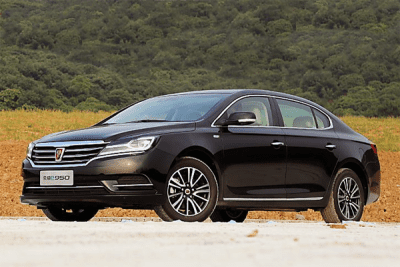 The PHEV ranking is a lot shorter with still less than 10 models available, and BYD not only keeps the top-2 positions, it also still controls over two thirds of this market with the Tang crossover Plug-in Hybrid taking over the lead from the Qin sedan PHEV. Combined sales of these two models are up just 6,5% on 2015. Roewe holds on to its third position with a 41% increase for its e550 sedan, which sells much better than its gasoline powered version. Chery’s first Plug-in hybrid sedan Arrizo7e lands at #4, just ahead of the GAC Trumpchi GA5 PHEV and the new Roewe E950 large sedan. The two import-brand models from BMW and Volvo don’t even reach four figure sales due to their price setting.
The PHEV ranking is a lot shorter with still less than 10 models available, and BYD not only keeps the top-2 positions, it also still controls over two thirds of this market with the Tang crossover Plug-in Hybrid taking over the lead from the Qin sedan PHEV. Combined sales of these two models are up just 6,5% on 2015. Roewe holds on to its third position with a 41% increase for its e550 sedan, which sells much better than its gasoline powered version. Chery’s first Plug-in hybrid sedan Arrizo7e lands at #4, just ahead of the GAC Trumpchi GA5 PHEV and the new Roewe E950 large sedan. The two import-brand models from BMW and Volvo don’t even reach four figure sales due to their price setting.
China PHEV sales 2016
| Model | 2016 | 2015 | 2016 share | |
| 1 | BYD Tang | 31.405 | 18.375 | 39,4% |
| 2 | BYD Qin PHEV | 22.097 | 31.898 | 27,7% |
| 3 | Roewe e550 | 15.145 | 10.711 | 19,0% |
| 4 | Chery Arrizo7e | 3.643 | 0 | 4,6% |
| 5 | GAC Trumpchi GA5 PHEV | 3.378 | 1.281 | 4,2% |
| 6 | Roewe E950 | 3.377 | 0 | 4,2% |
| 7 | BMW 530Le | 433 | n/a | 0,5% |
| 9 | Volvo S60L PHEV |
284 | 289 | 0,4% |

